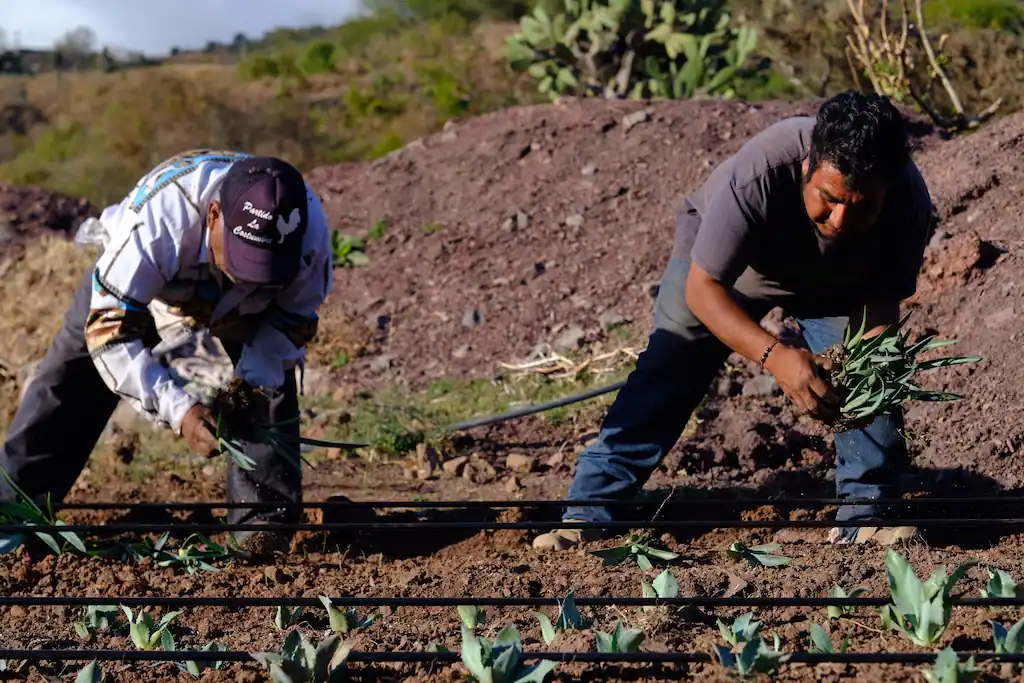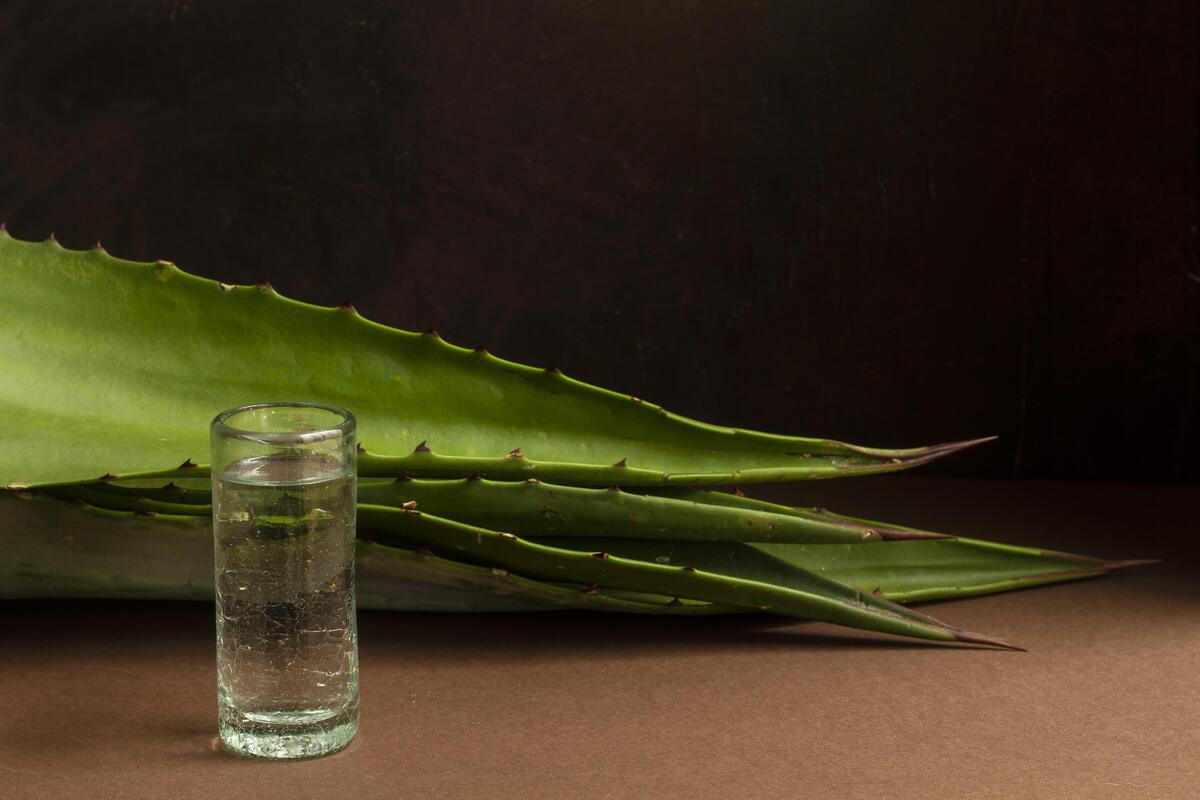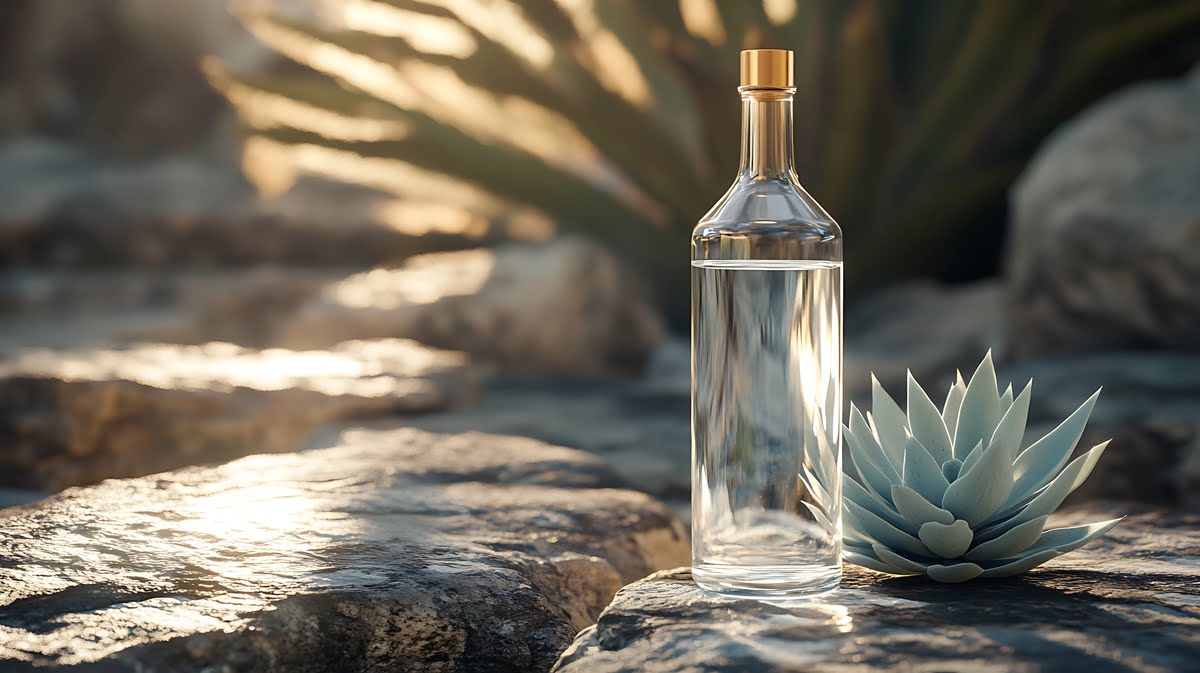
What’s the difference between tequila and mezcal? Tequila and mezcal are iconic spirits that originated in Mexico. Both are known for their rich flavors and historical significance. While they share a common ingredient, the agave plant, these two beverages have distinct identities.
Technically, tequila is a type of mezcal. Mezcal is the general term for spirits made from the agave plant, while tequila is a specific kind of mezcal that must be produced using blue agave in one of five Mexican states. Mezcal can be crafted from various agave species across nine different Mexican states.
Here, we’ll journey through their histories, their unique production processes, the regions they come from and more.
History of Tequila and Mezcal
The legacies of tequila and mezcal are deeply intertwined with the culture and history of Mexico, going back centuries to the indigenous peoples of the region.
History of Mezcal
The word “mezcal” comes from the indigenous language Nahuatl, which translates to “cooked agave.” The production and consumption of mezcal dates to pre-Hispanic times.
Zapotecs, Mixtecs, and Aztecs revered mezcal for its spiritual properties and often used it in rituals and ceremonies. When the Spanish conquistadors arrived in the 16th century, they brought knowledge of distillation. This significantly influenced and refined the mezcal production process.
If you want to know much more about the fascinating world of mezcal, you can always visit our article on the origins of mezcal.
History of Tequila
Tequila evolved from a beverage known as “pulque,” which made from the fermented sap of agave plants. It all started in the area surrounding the town of Tequila (Jalisco). Like mezcal, the native Nahuatl-speaking peoples also consumed tequila before the Spanish arrived.
Tequila became what we know it as today with the introduction of distillation techniques from the Spanish in the 16th and 17th century. By the late 19th and early 20th century, tequila’s reputation had become a symbol of national pride for Mexico.
Mezcal and tequila have faced their challenges over the centuries—from regulation hurdles to issues of authenticity and quality. But at the same time, their enduring presence and increasing global popularity are testaments to their cultural significance and the craftsmanship behind them.
Today, tequila and mezcal are not only appreciated as beverages—they’re celebrated as embodiments of Mexican heritage and tradition.

How are Mezcal and Tequila Made?
Making tequila and mezcal is an intricate combination of tradition, time and technique. Although both spirits are made from agave, their production and distillation processes account for some of their distinct characteristics.
How is Tequila Made?
- Harvesting: The process begins with the jimadores, skilled farmers who harvest the blue agave plant after it has matured.
- Cooking: The harvested agave piñas (the heart of the plant) are then baked in large ovens. This cooking process converts the main sugar, fructose, into fermentable sugar.
- Mashing: After cooking, the piñas are crushed to extract the agave juice, which is transferred to tanks for fermentation.
- Fermentation: Over several days, natural yeast turns the carbohydrates to alcohol.
- Distillation: The fermented liquid is distilled twice (sometimes more, depending on the brand or type of tequila). The initial distillation is called ordinario. The second distillation refines the spirit to the desired alcohol content.
- Aging: Tequila must be matured in white oak barrels for at least two months for Reposado and 12 months for Añejo. How long it’s aged determines whether the tequila is categorized as Blanco, Reposado, Añejo, or Extra-Añejo.
How is Mezcal Made?
- Harvesting: unlike tequila, which only uses blue agave, mezcal can be made from over 30 varieties of agave.
- Cooking: The heart of the agave is roasted in underground pit ovens lined with lava rocks, wood, and charcoal. This gives mezcal its characteristic smoky flavor.
- Mashing: The roasted agave is then crushed, traditionally by a stone wheel turned by a horse or donkey.
- Fermentation: The mezcal is left to ferment in large wooden tanks.
- Distillation: Like tequila, mezcal undergoes a double-distillation process. The first distillation is known as ordinario.
- Aging: Mezcal can also be aged. The terms Reposado and Añejo indicate the duration of aging. If the mezcal is not aged, it is called Joven.
To learn more about aging, check out how mezcal is made or How long is mezcal aged.

Where are Mezcal and Tequila Made?
Tequila and mezcal must be cultivated and processed within designated regions in Mexico. This ensures the spirit’s authenticity and quality.
Where is Tequila Made?
The main tequila production areas include:
- Jalisco: The heartland of tequila. The entire state is recognized for its production with the town of Tequila, its eponymous hub, at the core. The region’s volcanic soil and climate make it ideal for blue agave cultivation.
- Nayarit: Select municipalities within Nayarit can produce tequila.
- Tamaulipas: Only certain municipalities within this state can produce this iconic spirit.
- Michoacán: The rich soils and climate conditions in certain areas are favorable for tequila production.
- Guanajuato: Certain municipalities can produce tequila.

Where is Mezcal Made?
Often regarded as tequila’s ancestor, mezcal can be made in more places. It can be produced in nine Mexican states. Each brings its own unique touch.
- Oaxaca:The stronghold of mezcal, Oaxaca accounts for approximately 85% of mezcal production. The diversity of agave species and history of artisanal methods make Oaxacan mezcal truly special.
- Durango: This state is renowned for its wild agave varieties, which infuse its mezcals with a distinctive flavor.
- Guanajuato: Though traditionally recognized for its tequila production, in recent times, it has emerged as a new territory for mezcal.
- Guerrero: An area important for its artisanal mezcals. It has carved a niche for its specialized variants.
- San Luis Potosí: This state stands out for its unique pot stills and reliance on wild agave, which make its mezcal unique.
- Tamaulipas: Mezcals from this area are characterized by their lush, fruity undertones.
- Zacatecas: This state has historically been a prominent mezcal producer.
- Michoacán: The state’s volcanic terrains lend a distinct characteristic to the mezcal.
- Puebla: A newer entrant in the official mezcal production map with offerings as diverse and rich as any seasoned producer.
Each of these regions imparts its unique character to the spirit. The soil composition, climate, and local production methods all influence the final product in a unique way. As with tequila, these geographical designations help maintain the spirit’s integrity and cultural significance.
For more, check out our post on where mezcal is made.
What Types of Agave Are Used in Mezcal and Tequila?
The agave is a succulent native to semi-arid and arid regions of America, mainly Mexico and the Caribbean. It’s the main ingredient in both tequila and mezcal.
The types of agave used and the regions in which they grow greatly influence the flavor and characteristics of the spirits.

What Type of Agave Is Tequila Made With?
Tequila can only be made with blue agave, which has a high sugar content, ideal for fermentation and distillation. Blue agave typically matures in six to 10 years. It grows predominantly in the Jalisco region and the other tequila producing areas.
Burros with agave piñas in the background
What Types of Agave Is Mezcal Made With?
Mezcal, on the other hand, can be made from over 30 different types of agave. This means a broader range of flavor profiles.
Some commonly used agave types include:
- Espadín: The most common variety used for mezcal, due to its faster growth and higher yield. It offers a balanced flavor profile and is widely cultivated.
- Tobalá: A wild agave that grows in the rocky terrains of Oaxaca’s mountains. Mezcals made with this type of agave are often more delicate, with fruity and floral notes.
- Arroqueño: A larger agave that takes longer to mature. This agave creates a rich, sweet mezcal.
- Tepextate: Known for its long, slender leaves, this type of agave takes up to 30 years to mature. The resulting mezcal has complex floral and spicy notes.
- Barril: Native to Oaxaca, this agave produces a spicy and aromatic mezcal.
- Madrecuixe: This agave adds herbaceous and citrus notes to the mezcal.
There are many other agave varieties used in mezcal production, each bringing its unique character and flavor. Many artisanal mezcal producers create batches from wild agaves, leading to unique and limited-edition bottles.
Man on top a mountain of roasting mezcal piñas

How are Mezcal and Tequila Aged?
Aging spirits in wooden barrels allows them to develop complexity, mellowness, and flavor. The type of wood, size of the barrel, climate of the aging location, and duration of the process all influence the final product’s flavor and characteristics.
How is Tequila Aged?
Tequila is mainly aged in oak barrels, imbuing the spirit with colors and flavors ranging from pale gold and light oak to rich amber and intense wood.
Here’s how different types of tequila are aged:
- Blanco (or Silver): Unaged or aged for less than two months. Blanco is a pure expression of the agave’s flavor.
- Joven (or Gold): Typically a blend of Blanco and Reposado. May have added coloring or flavoring agents.
- Reposado: Aged between two months and one year in oak barrels. The process imparts a golden hue and the beginnings of oak flavors.
- Añejo: Aged between one and three years. The result is a darker color and more pronounced oak, vanilla, and caramel flavors.
- Extra-Añejo: Aged for over three years. This is the darkest and richest of tequilas, often resembling a fine cognac or whiskey.
How is Mezcal Aged?
Like tequila, Mezcal can be aged in barrels. The type of mezcal varies by the length of the aging process:
- Joven: Clear mezcal, unaged or aged for less than two months. This is a pure expression of the agave’s flavor and mezcal’s characteristic smokiness.
- Reposado (or Madurado): Aged between two months and one year in oak barrels. The aging adds subtle color and complexity to the smoky base.
- Añejo: Aged between one and 12 years in barrels. The extended aging results in a deeper color and a melding of smoky and woody flavors.
While both tequila and mezcal can be aged, aging doesn’t make the spirit better or worse. Some enthusiasts prefer the pure, unaltered taste of a Blanco tequila or Joven mezcal, while others savor the depth and complexity that comes with age.
Flavor Profiles

Mezcal gets its earthy, smoky essence, from artisanal production methods deeply rooted in tradition. Tequila’s crisp, agave-forward profile is crafted through meticulous processes that embody modernity.
From mezcal’s rustic allure to tequila’s vibrant character, each sip unveils a tale of cultural heritage and craftsmanship.
What Does Tequila Taste Like?
Depending on its aging and the type of production, tequila can have a range of flavor profiles:
- Blanco: Bright, crisp, and clean, Blanco showcases the agave’s flavor with notes of citrus, pepper, and sometimes a hint of sweetness.
- Joven: This blend can sometimes have a slightly sweeter profile.
- Reposado: Time spent in oak barrels adds flavors of vanilla, caramel, and honey to Reposado’s fresh agave notes.
- Añejo: Extended aging gives Añejo tequilas a richer, deeper profile, with pronounced notes of dried fruit, nuts and spices.
- Extra Añejo:This tequila can sometimes mirror fine aged whiskies or cognacs in their flavor depth. The agave gives it notes of chocolate, tobacco, and dark fruit.
What Does Mezcal Taste Like?
Mezcal’s flavor is heavily influenced by the production method and type of agave used. For instance, Espadín often yields a balanced profile, while wild varieties like Tobalá can introduce flavors ranging from tropical fruit to a deep, earthy richness.
- Joven: Raw and unabashedly smoky, Joven mezcals typically offer a burst of flavors that can range from fruity and floral to earthy and mineral.
- Reposado and Añejo: Aging in oak barrels introduces softer, warmer notes to mezcal. The smoky base combines with these flavors to produce profiles of smoked vanilla, charred fruit, and toasted spices.
Mezcal Paloma Cocktail: one of the quintessential Mexican traditional drinks

How to Drink Mezcal and Tequila
As always, you should enjoy your mezcal and tequila in the way you like best, but here are some of our tips for savoring the flavor.
How to Drink Tequila
- Sipping: Premium tequilas, especially aged varieties, are best enjoyed neat. This lets you fully appreciate the complex flavors and aromas.
- In cocktails: Tequila is the base of many beloved cocktails, like the Margarita, Tequila Sunrise, Paloma, and Matador.
How to Drink Mezcal
- Sipping: Finer mezcals are best enjoyed straight, allowing you to appreciate the smoky and varied flavors of the agave. When sipped, mezcal is traditionally accompanied by slices of orange sprinkled with a mixture of ground fried larvae, ground chili peppers, and salt called “sal de gusano” (worm salt).
- With Sangrita: A traditional way to enjoy mezcal in Mexico is with a chaser of sangrita. Sangrita is a spicy, sweet, sour non-alcoholic drink typically made from tomato juice, orange juice, lime juice, and chili peppers.
- In cocktails: Mezcal’s smokiness has piqued the interest of bartenders and mixologists across the globe. Check out the most famous Mezcal cocktails recipes from our bartender at Del Maguey.
Del Maguey and the cultural journey of mezcal
From their distinct origins to their production methods, Mezcal and Tequila embody the essence of Mexican heritage and tradition, each telling a different story of the agave’s remarkable versatility. With every sip of Mezcal and Tequila, we are not simply tasting spirits; we are taking part in a vibrant journey through Mexican culture and craftsmanship.
Del Maguey mezcals represent some of the most authentic and respected expressions of artisanal mezcal. Traditionally produced in small villages across Oaxaca, each expression is a single village mezcal, made from responsibly cultivated and harvested agave, cooked in earthen pit ovens and distilled in handcrafted stills.
The result is a collection of mezcals with distinctive aromatic profiles, where the character of the agave, the terroir and the expertise of each master mezcalero come together in complex, deep and honest flavours that reflect the true diversity of Mexican mezcal.






